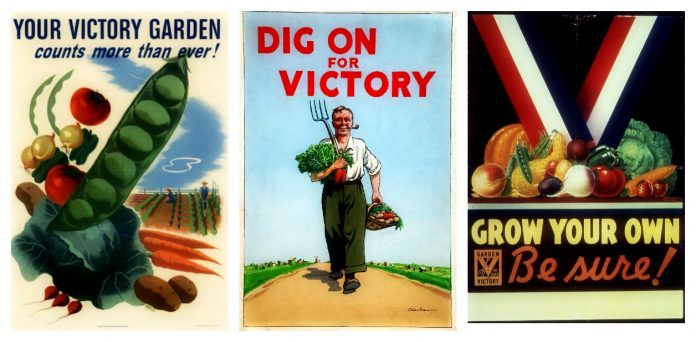The world wars were uncertain times. Americans worried about the economy, national security and the nation’s food supply. Victory gardens empowered citizens to produce food in their backyards and community spaces. Government agencies, public organizations and businesses worked together to provide access to land, seeds and supplies.
Victory gardening was a successful initiative. In 1943, there were 20 million victory gardens in the United States. Forty percent of vegetables produced in the U.S. during World War II came from victory gardens.¹
Victory garden – an old concept that is still relevant
Seventy-five years later the victory garden concept is still relevant. Food insecurity, lack of access to nutritious food, affects 800 million Americans. Poverty, unemployment, rising food costs and lack of food stores in rural and urban areas cause food insecurity.
Planting modern victory gardens reduces food insecurity by improving access to healthy, nutritious food. In addition to improved access, tending a victory garden provides exercise and entertainment for the entire family. Gardening is a great way to teach kids or grandkids about where their food comes from. Filling the family table with homegrown food instills a sense of pride in children and adults alike.
Plan your victory garden
Space. You don’t need a large space to grow a significant volume of food. A garden study from Ohio State University reports 210 pounds of produce (1.4 pounds per square foot) was harvested from an intensively cropped 10×15 foot garden!² Excess fresh food can be shared with friends and neighbors, donated to a local food bank or preserved.
Location. You can grow a victory garden in the ground or in raised beds and containers. Make sure your site has healthy soil with good drainage. Adequate sunlight is critical to growing a successful garden. Most vegetables require a minimum of six to eight hours direct sunlight each day.
Vegetable varieties. In 1944, Stumpp & Walter Seed Company marketed a victory garden collection of vegetable varieties for the home garden. The collection included 15 different vegetable varieties.
You can purchase World War II era heirloom vegetable varieties today: Green Arrow peas, White Icicle radishes, Red Wethersfield onions, Early Jersey Wakefield cabbage, Black Seeded Simpson lettuce and Purple Top turnips.
6 Steps to plant and care for your victory garden
Step 1. A soil test can detect nutrient deficiencies and prescribe amendments. Contact your county Extension Office for help locating a reputable soil test lab.
Step 2. Feed your soil with fertilizer according to the soil test results. Work amendments and fertilizer into soil by hand or with a rototiller to prepare your bed for plants.
Follow the directions on the fertilizer packaging; over-application can harm soil. Alternatively, use compost to boost the level of organic matter in your soil. Unlike synthetic fertilizers, it is impossible to harm soil with compost.
Step 3. Read each seed packet for depth and spacing requirements before sowing the seeds of victory. Once seedlings have emerged, thin as needed.
Step 4. Care for your garden with regular weeding. Hand-weeding is more effective than herbicides and better for the environment.
Step 5. Aim to give your garden one inch of water each week. In southern Ohio, nature typically provides enough precipitation for the garden during spring, but you may need to supplement with irrigation in the summer. The best time to water is early morning between 5 and 9 a.m., before the sun is high in the sky.
Step 6. Physical barriers can help prevent damage from wildlife and insects. When applying chemical treatments for disease or infestation, follow the directions on the label.
Resources
¹ Walbert , D. “Victory Gardens”. Learn NC, UNC School of Education. Retrieved March 22, 2017 from http://www.learnnc.org/lp/pages/5883.
² “Planning for the Garden”, Excerpted from OSU Bulletin 287, 1991. Ohio State University Extension.
















